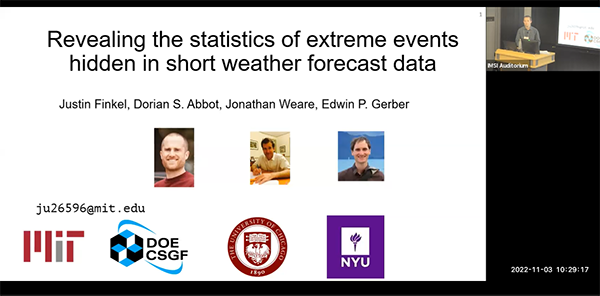Revealing the statistics of extreme events hidden in short weather forecast data
Presenter
November 3, 2022
Abstract
Data-driven methods such as machine learning may hold the potential to dramatically speed up climate simulation, enabling more precise estimation of statistics such as return periods of extreme weather events. But it is questionable whether such models can be trusted to generalize into the far tails of the climatic probability distribution, beyond the training data, where the human and ecological impacts are greatest. High-resolution, physics-based weather models remain the most reliable tools to simulate extreme events, but for computational reasons are typically only run for several weeks at a time---not nearly enough to estimate climatic-timescale return periods. In this talk, I will describe a collection of simple but statistically sound methods to estimate long return times from short weather forecasts. With proper weighting of different trajectories, we can stitch together many partial trajectories into longer ones, which are not independent but come from the same distribution. We illustrate on a dramatic weather phenomenon, sudden stratospheric warming (SSW), which is intermittent and scarcely predictable but very impactful on midlatitude winter weather regimes. Several different approaches, including Markov state modeling and linear inverse modeling, indicate similar return periods. Extracting all available information from existing weather models is an important first step to generate null hypotheses and identify reaction pathways to pave the way for event-focused design of ensemble simulations.
